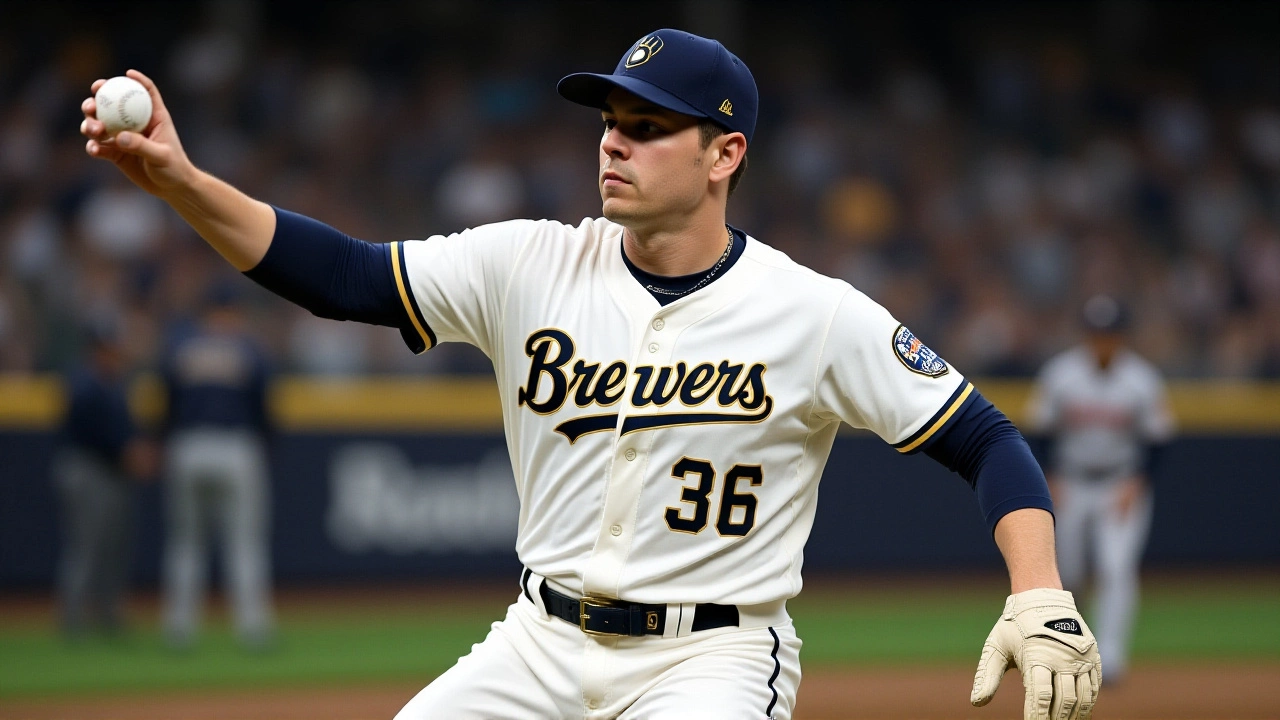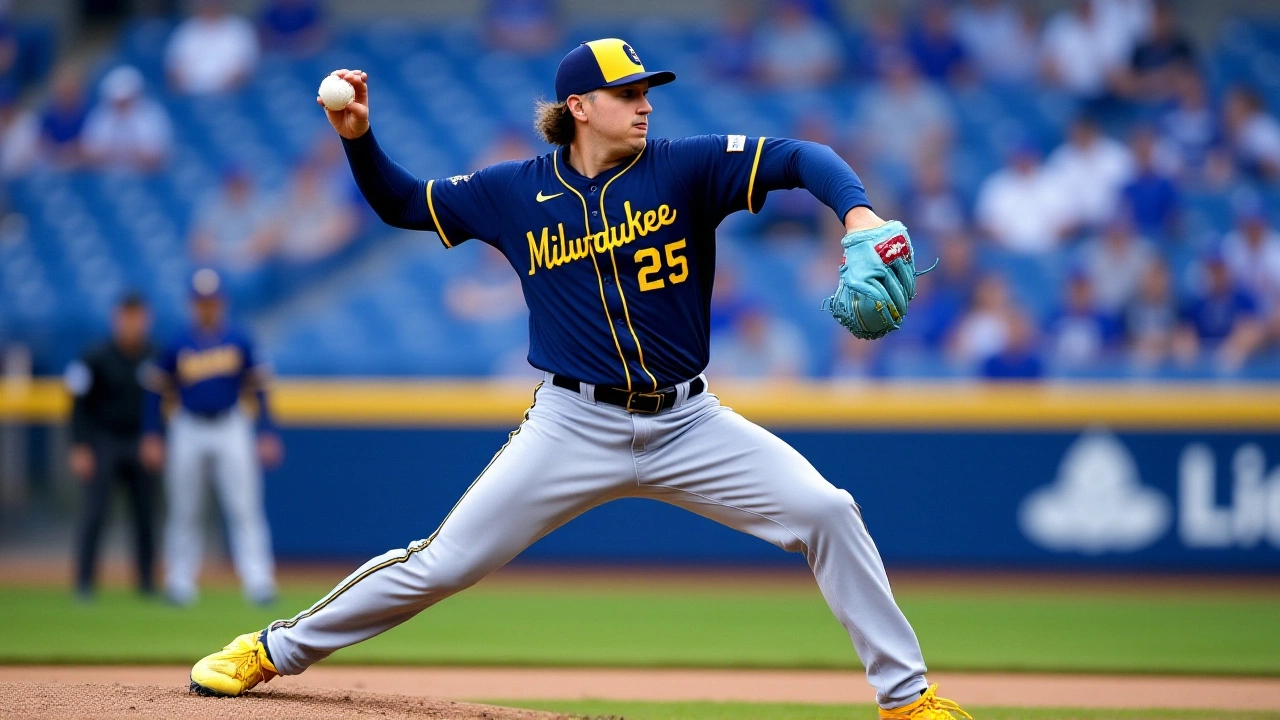The NLCS kicked off on Monday, October 13, 2025, when the Los Angeles Dodgers and the Milwaukee Brewers locked in their 26‑player rosters at American Family Field in Milwaukee, Wisconsin. Both clubs made a single, strategic shuffle: the Brewers swapped reliever Nick Mears for right‑hander Tobias Myers, while the Dodgers added bullpen arm Ben Casparius and cut rookie catcher Dalton Rushing. The moves, explained by the teams’ managers, underscore the shift from a five‑game to a potential seven‑game series and hint at how each side plans to stretch its pitching depth.
The showdown at American Family Field marked the third postseason meeting between the two franchises. The first was the 2018 National League Championship Series, where the Dodgers swept Milwaukee en route to the World Series. The second came in the 2020 NL Wild Card Series, a tight three‑game set that again ended in a Dodgers victory. This time, the Brewers are hoping to rewrite the script after a dominant regular‑season sweep of the Dodgers in all six head‑to‑head games.
Historical Context: Past Postseason Encounters
Back in 2018, the series was a textbook Dodgers performance: they won four straight to clinch the NL pennant. Fast forward to 2020, the Wild Card Series was a nail‑biter, but Los Angeles still emerged on top in three games. Those wins gave the Dodgers a 2‑0 edge in postseason history against Milwaukee. Yet the 2025 regular season tells a different story. The Brewers took every meeting, outscoring the Dodgers 28‑19 across six games, a rare reversal that has fans buzzing about a possible upset.
Roster Moves and Strategic Rationale
Brewers' Adjustment
Milwaukee’s Milwaukee Brewers entered the NLCS with 12 pitchers and 14 position players. The only alteration from the NLDS roster was swapping Nick Mears, a right‑handed reliever, for Tobias Myers, a pitcher known for longer relief outings. "Mears has been unbelievable for us this year," said Pat Murphy, manager of the Brewers. "But in a seven‑game series you need length, not just short bursts. That's why we brought in Myers."
Myers, who started 31 of his 49 career appearances, offers the kind of multi‑inning flexibility that could keep the bullpen fresh. Brewers fans will be watching to see if he can bridge the gap between starters and late‑innings specialists, a role that proved vital in the NLDS against Chicago.
Dodgers' Adjustment
The Los Angeles Dodgers also fielded 12 pitchers, but their tweak was adding Ben Casparius, a right‑hander who posted a 7‑5 record with a 4.64 ERA in 46 appearances during the regular season. The move came at the expense of catcher Dalton Rushing, who was sent down after struggling offensively.
Dodgers skipper Dave Roberts explained, "In a potential seven‑game series pitching becomes more paramount. Adding Casparius gives us another solid arm for those high‑leverage innings."
Los Angeles also kept the versatile Shohei Ohtani on the roster, retaining his two‑way eligibility. Ohtani will continue to swing the bat and take the mound, a rarity that forces opposing managers to plan for both scenarios.
Key Players Missing and Injured
Two notable absences could shift the balance. First baseman Rhys Hoskins sat out the NLCS despite a respectable .237/.332/.416 line with 12 homers and 43 RBIs this season. A lingering right lat strain also kept left‑handed ace Brandon Woodruff off the mound; he hasn't pitched since September 17.
For the Dodgers, veteran left‑hander Blake Snell earned the Game 1 start, while rookie right‑hander Will Klein became postseason‑eligible but was left off the active list. The Dodgers also retained relief stalwart Justin Wrobelski after he replaced an injured Tanner Scott in the NLDS.
Expert and Analyst Perspectives
Baseball analysts see the Brewers’ decision to keep a full complement of position players as a gamble that could pay off if their offense clicks early. "Milwaukee's lineup—featuring the likes of William Contreras, Christian Yelich, and Jackson Chourio—has depth," noted ESPN’s senior writer Kevin Ashton's analysis. "If they can generate runs, they won’t need to dip into the bullpen as often."
Conversely, former pitcher turned commentator Mike Timlin praised the Dodgers’ bullpen flexibility. "Adding Casparius gives Los Angeles a right‑handed option with a proven track record against big‑league lineups," Timlin said. "In a series that could stretch to seven games, those extra arms are priceless."

What’s at Stake: Game 1 and Beyond
Game 1 is set to tip off at 8:07 p.m. Eastern Time, with Aaron Ashby slated to start for Milwaukee—a move that mirrors his opener role in Game 2 of the NLDS. The Dodgers will counter with Blake Snell, who boasts a 2.71 ERA in his last 12 starts.
If the Brewers can silence the Dodgers’ potent lineup early, they’ll force a long‑haul series where their depth could shine. On the other hand, a strong performance by Snell could give Los Angeles momentum that they’ve been accustomed to in postseason play.
- Venue: American Family Field, Milwaukee
- Start times: Game 1 – 8:07 p.m. ET (Oct 13)
- Brewers’ roster: 12 pitchers, 14 position players
- Dodgers’ roster: 12 pitchers, 14 position players + Ohtani
- Key changes: Mears → Myers (Brewers), Casparius added (Dodgers)
Future Implications
Should the Brewers clinch the NLCS, they’ll become the first team since the 2004 St. Louis Cardinals to win a pennant after sweeping a rival in the regular season. A World Series berth would also mean the first championship for Milwaukee since 1982, a drought that has haunted the fanbase for generations.
For the Dodgers, another NLCS win would cement their status as the decade’s dominant NL franchise, adding a third championship in eight years. It would also boost the market value of key contracts, especially Ohtani’s, who remains one of baseball’s most marketable stars.
Frequently Asked Questions
Why did the Brewers replace Nick Mears with Tobias Myers?
Pat Murphy explained that Mears excels in short bursts, but a seven‑game series demands longer relief stints. Myers, who has started many of his appearances, offers that extra innings length, giving the Brewers more flexibility in tight games.
How significant is Shohei Ohtani’s two‑way role for the Dodgers?
Ohtani’s ability to pitch and hit adds a strategic wrinkle. If he starts a game, the Dodgers can reshuffle the lineup mid‑game, forcing the Brewers to juggle both pitchers and hitters, which can disrupt defensive alignments.
What impact could the absence of Rhys Hoskins have on Milwaukee’s offense?
Hoskins’ power bat has been a key source of extra‑base hits. Without him, the Brewers will lean more on Yelich and Chourio for run production. The lineup’s depth will be tested, especially against Dodgers relievers like Casparius.
Is the Dodgers’ bullpen deeper than Milwaukee’s?
On paper, Los Angeles added Casparius to bolster a bullpen that already includes veterans like Blake Snell and Justin Wrobelski. While both teams carry 12 arms, the Dodgers’ mix of right‑ and left‑handed relievers gives them a slight edge in matchup flexibility.
What are the next steps if the series goes to a Game 7?
A decisive Game 7 would likely feature the teams’ ace starters—Freddy Peralta for Milwaukee and Walker Buehler (if healthy) for LA—while both benches would be betting on their relievers to lock down the final innings. The winner advances to the World Series, where the venue will be determined by the champion’s home‑field record.
